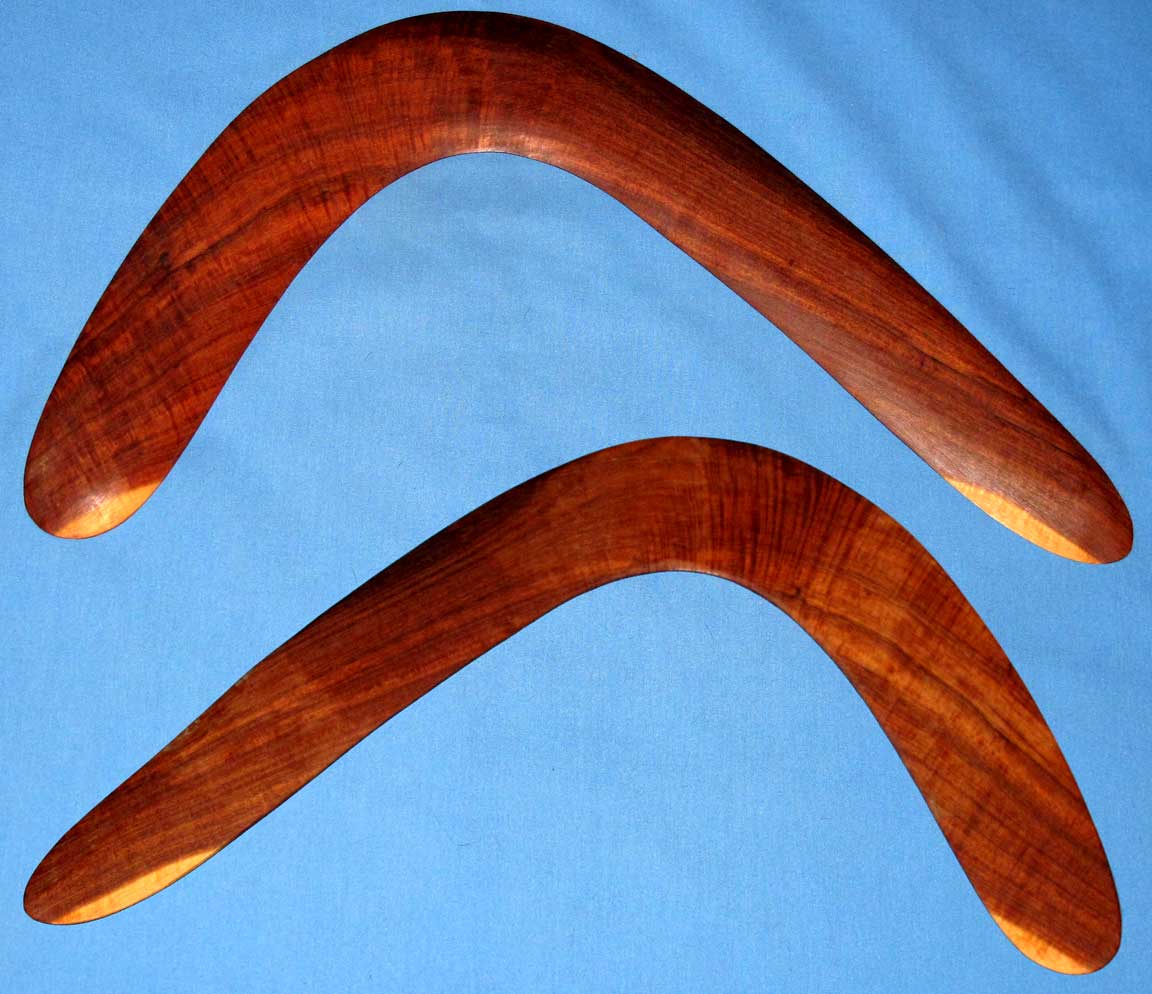Duncan MacLennan / Sydney Boomerang School
Item TB365
This Item was Sold on 5 January
2016 for $79
Other collectable boomerangs for sale can be found on the
Collectible Boomerangs link.
Historical Pricing information for this item and similar collectable boomerangs can be found on the Boomerang Pricing Guide
|
This returning style Australian Aboriginal hook boomerang was made in the early 1980s out of a Mulga natural elbow with the grain running true along the curvature of the boomerang. The shape is nearly identical to that of the famous Joe Timbery hook. Duncan MacLennan had Aborigines from the La Perouse district of Sydney make boomerangs for his Sydney Boomerang School shop. Many of these Aborigines were members of the famous Timbery family. Both surfaces are sanded smooth and the airfoils are very nice. It is in excellent condition. I did test throw this boomerang and found it to be a good flyer with a range of 35+ metres. It is heavy and it likes moderate winds for a full return. This is a fine collectible so you should take good care of it and hang it on the wall. A coating of Gun Oil or Tung Oil will make this one shine.
Australian Aborigines are well known for making boomerangs. The majority of the Aborigines had the technology to make throwsticks, or non-returning boomerangs. Only a small percentage of the tribal groups knew how to make true returners and most of these came from the eastern coastal regions of Queensland, New South Wales and Victoria. During the past century, the majority of the Aborigines came out of the bush and were somewhat assimilated into the European man's culture. Many Aborigines began making returning style boomerangs to sell to tourists. The earliest ones were well made out of natural timber and with the grain following the curvature of the boomerang. Today, most hardwood boomerang are cut out of a large board and the grain is usually straight and running parallel to a line spanning the tips of the blades. Boomerangs that are made with the grain following the contour of the blades are much stronger and more valuable. In addition, some boomerangs have good airfoiling. The majority do not. Most "tourist boomerangs" have painted upper surfaces that display Australian animals and decorative lines and/or geometric patterns. Most pre-contact returners have no artwork or the artwork is simple and scratched into the surface. It is easy to tell the tourist boomerang from the valuable ethnographic artifact. However, tourist boomerangs that are made properly with the grain running along the contour and with good airfoiling and art work do have good collectable value, especially if they are made by a famous Aboriginal artists like Bill Onus or Joe Timbery. |

How to Order | Back to: Boomerang Catalog | Collectable Boomerangs | Boomerang Pricing Guide | contact: Ted Bailey